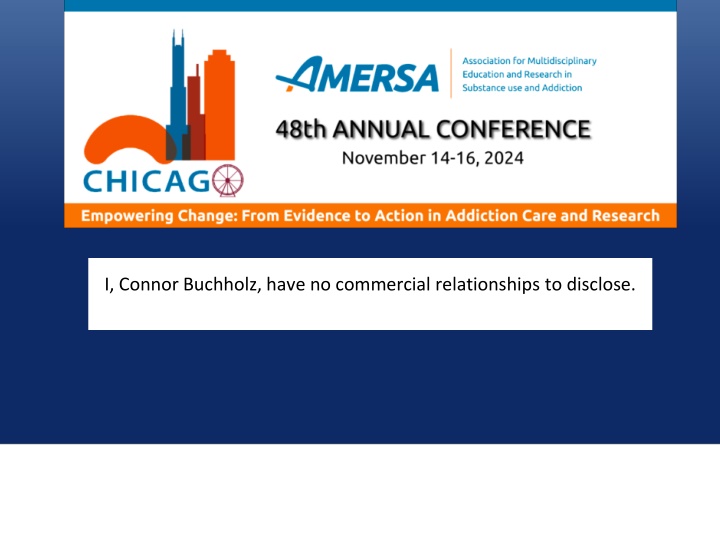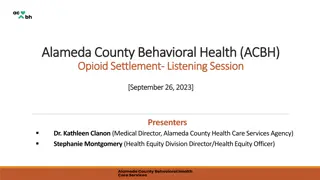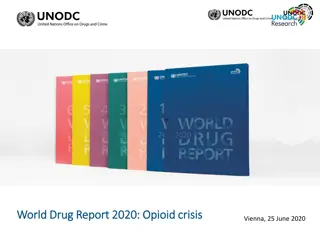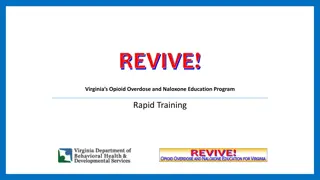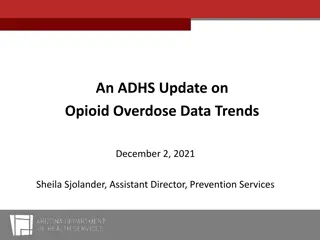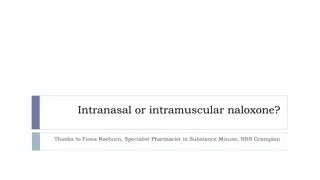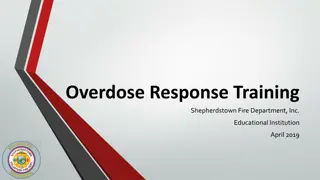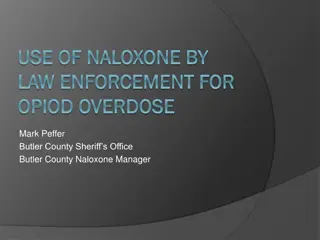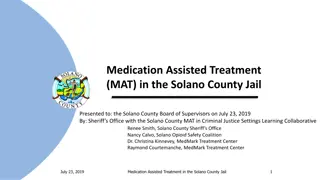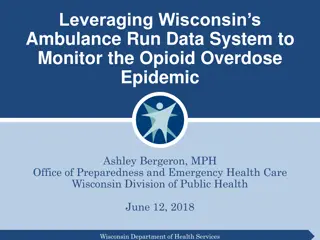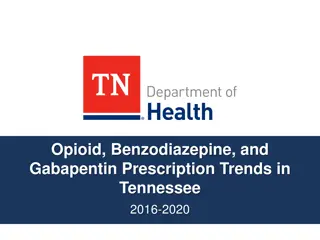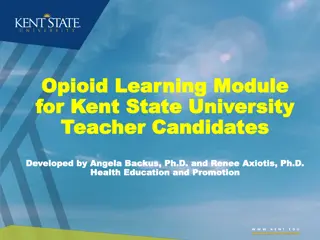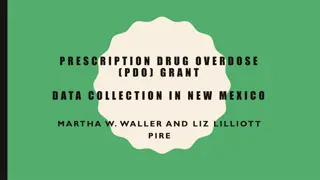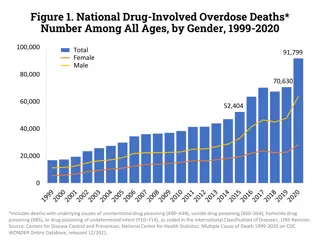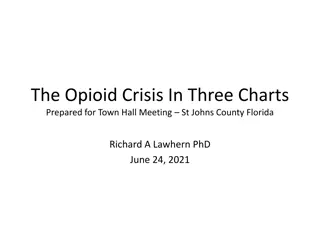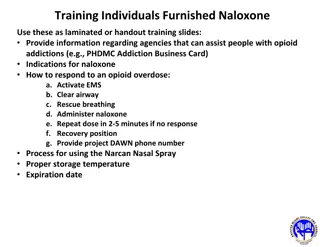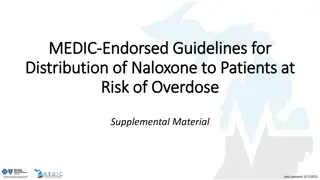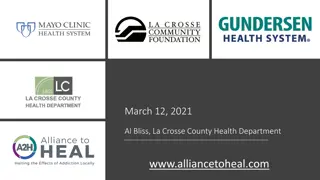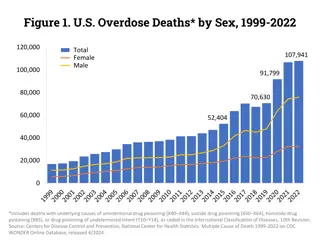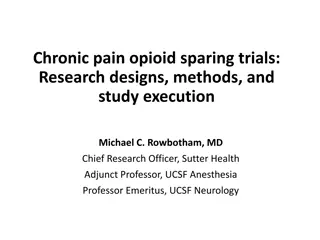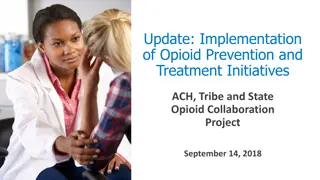Trends in Polysubstance-Involved Opioid Overdose Deaths Among US Youth
Drug overdoses are a significant concern for US youth, with opioids, especially illicitly-manufactured fentanyl, being a major cause of fatalities. This study explores trends in opioid overdose deaths among young individuals aged 15-24, focusing on polysubstance involvement and transition to other substances.
Download Presentation

Please find below an Image/Link to download the presentation.
The content on the website is provided AS IS for your information and personal use only. It may not be sold, licensed, or shared on other websites without obtaining consent from the author.If you encounter any issues during the download, it is possible that the publisher has removed the file from their server.
You are allowed to download the files provided on this website for personal or commercial use, subject to the condition that they are used lawfully. All files are the property of their respective owners.
The content on the website is provided AS IS for your information and personal use only. It may not be sold, licensed, or shared on other websites without obtaining consent from the author.
E N D
Presentation Transcript
I, Connor Buchholz, have no commercial relationships to disclose.
Trends in Polysubstance-Involved Opioid Overdose Deaths Among US Youth, 2020- 2023 Connor Buchholz, Joe R. Friedman, Arthur R. Williams, Jamie K. Lim, Meredith Glass, Scott E. Hadland connorbu@bu.edu @BuchholzConnor
Funding Sources National Institute on Drug Abuse K18DA059913 National Institute of Health 5R01DA057566-03 National Institute on Drug Abuse 5T32DA041898
Introduction Drug overdoses and poisonings are the third leading cause of death in US children under 191and the leading cause of death in young adults aged 19-24.2 Most unintentional overdoses in adolescents and young adults (hereafter, youth ) involve opioids, with illicitly- manufactured fentanyl implicated in at least three-quarters of all fatalities.3
Introduction Among adults 25 and older, nearly half of all opioid overdose deaths also involve other substances (most commonly stimulants such as methamphetamine or cocaine).4 However, among adolescent opioid overdose deaths, polysubstance use is less common.5 Little is known about the age at which youth overdoses transition from involving only opioids to also involving other substances.
Methods Study Design and Sample We extracted drug overdose fatalities of youth aged 15-24 from the Centers for Disease Control and Prevention Wide-Ranging Online Data for Epidemiologic Research. CDC WONDER database Data collection consisted of years 2020 - 2023. Data from 2023 was provisional. We identified overdoses involving opioids with and without other substances. International Statistical Classification of Diseases and Related Health Problems, Tenth Revision (ICD-10 ).
Methods Data Analysis We extracted death counts and rates stratified by age, sex, race, ethnicity, and census region. X40-44 (accidental poisonings by drugs), X60-X64 (intentional self-poisoning by drugs), X85 (assault by drug poisoning), Y10-Y14 (drug poisoning of undetermined intent).
Methods Data Analysis We calculated overdose deaths involving opioids alone: Fentanyl and other synthetic opioids Heroin Methadone Prescription opioids Other opioids (opium and other/unspecified opioids)
Methods Data Analysis We calculated opioid overdose deaths involving other substances: Psychostimulants other than cocaine Cocaine Benzodiazepines Alcohol Other substances (includes cannabis and barbiturates)
Results From 2020-2023, there were 22,972 opioid overdose deaths among youth aged 15-24. Fentanyl was involved in more than 9 in 10 opioid overdose deaths. Overall, approximately half of all deaths involved polysubstance use. At age 21 and older, opioid overdoses most commonly involved other substances rather than opioids alone.
Figure 1 5,000 All overdoses (any substance) 4,500 Opioids alone Opioids with other substance(s) 4,000 Opioids with stimulants 3,500 Overdose Deaths, N 3,000 2,500 2,000 1,500 1,000 500 0 15 16 17 18 19 20 21 22 23 24 Age, y
Results Polysubstance-involved overdoses comprised: 25.2% of opioid overdose deaths among 15-year-olds 39.4% among 18-year-olds 52.8% among 21-year-olds 58.1% among 24-year-olds Collectively, stimulants were the most commonly involved substances other than opioids in these deaths, and were present in: 12.4% of opioid overdose deaths among 15-year-olds 21.1% among 18-year-olds 33.8% among 21-year-olds 40.6% among 24-year-olds
Figure 2 100 Opioids in combination with 1 other substance 90 Opioids with stimulants Percentage of opioid overdose deaths involving Opioids with benzodiazepines 80 Opioids with alcohol 70 other substances, % 60 50 40 30 20 10 0 15 16 17 18 19 20 21 22 23 24 Age, y
Discussion At age 21 and older, opioid overdoses more commonly involved other substances rather than opioids alone. As national data show that the overdose crisis has entered a fourth wave in which overdose deaths increasingly involve stimulants in addition to opioids.4 Our results highlight an age-specific transition from deaths involving only opioids to those also involving methamphetamine, prescription stimulants, cocaine, and other substances.
Limitations These results represent snapshots of shifting dynamics which may soon change. Potential for misclassification of substances involved in deaths in CDC WONDER data, particularly if full toxicology testing or reporting was not conducted at the time a death was documented. Deaths involving >1 of the substances listed could be counted more than once; thus, percentages add to greater than 100%.
Diversity, Equity, and Inclusion 14% (n=1,625) of polysubstance use deaths among Non- Hispanic black youth. 24%; (n=2,760) among Hispanic youth. 56%; (n=6,525) among Non-Hispanic White youth. Black and Latinx patients may be more likely to enter treatment when they receive care from providers who have a shared experience and understanding of structural racism and related social determinants of health.7 Future research should measure and examine racial disparities in access, engagement, and retention in access to medication for OUD.
Conclusion Amid high mortality from overdoses involving illicitly- manufactured fentanyl and stimulants, these findings suggest that interventions to address overdoses among youth should not have a singular focus on opioids. Rather, drug prevention, harm reduction, and addiction treatment need to more broadly incorporate services to address the rising contribution of stimulants and other substances.
Thank You! Email: connorbu@bu.edu
References 1. Goldstick JE, Cunningham RM, Carter PM. Current Causes of Death in Children and Adolescents in the United States. N Engl J Med. 2022;386(20):1955-1956. 2. Centers for Disease Control and Prevention. WISQARS Leading Causes of Death Visualization Tool. Accessed August 30, 2024. https://wisqars.cdc.gov/lcd/?o=LCD&y1=2022&y2=2022&ct=10&cc=UNI&g=00&s=0&r=0&ry=2&e=0&ar=l cd1age&at=groups&ag=lcd1age&a1=0&a2=199 3. Friedman J, Hadland SE. The Overdose Crisis among U.S. Adolescents. N Engl J Med. 2024;390(2):97-100. 4. Friedman J, Shover CL. Charting the fourth wave: Geographic, temporal, race/ethnicity and demographic trends in polysubstance fentanyl overdose deaths in the United States, 2010 2021. Addiction. 2023;118(12):2477-2485. 5. Lim JK, Earlywine JJ, Bagley SM, Marshall BDL, Hadland SE. Polysubstance Involvement in Opioid Overdose Deaths in Adolescents and Young Adults, 1999-2018. JAMA Pediatr. 2021;175(2):194. 6. Centers for Disease Control and Prevention. CDC WONDER Database. Accessed April 11, 2024. https://wonder.cdc.gov/ 7. Alegr a M, Frank RG, Hansen HB, Sharfstein JM, Shim RS, Tierney M. Transforming Mental Health And Addiction Services. Health Aff (Millwood). 2021 Feb;40(2):226-234. doi: 10.1377/hlthaff.2020.01472. Epub 2021 Jan 21. PMID: 33476189.
